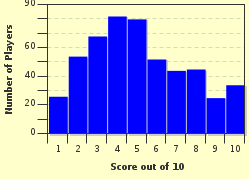Quiz Answer Key and Fun Facts
1. The first drug is one that has been in use for centuries as a painkiller. It was originally taken as a powder made from the bark and leaves of a willow tree but is more usually taken as a tablet now. Which drug am I describing?
2. Diamorphine is very powerful analgesic obtained from the opium poppy but it is probably better known by another name which was originally a trade name. What is this other name?
3. The bark of Cinchona succiruba is the source of a very widely used drug, first used in European medicine in the 1600s and still in use today. Which drug is it?
4. Paclitaxel has become one of the most effective drugs used in the treatment of breast and ovarian cancers. It was first discovered in the bark and leaves of a tree. Which type?
5. William Withering is famous for having first published a paper in 1785 describing the use of digitalis (derived from foxgloves) in treating dropsy. The modern drug digoxin is isolated from digitalis. What is less well-known is that the grandfather of an even more famous man collaborated with Withering in the treatment of at least one patient and published his own account of the use of digitalis. Whose grandfather was it?
6. Caffeine is a well-known constituent of tea but which drug, used to help people with asthma and other breathing difficulties, is also derived from the same plant, Camellia sinensis?
7. Capsaicin cream is a fairly recent treatment for pain, particularly arthritis pain and nerve pain, and has also been used to help people who suffer from bad itching. The active ingredient comes from a plant that is found in our kitchens but do you know what it is?
8. Yams are the source of a group of chemicals that are very important to human medicine as they are used to treat a wide range of conditions. This group of medicines derived from yams are called what?
9. Gout is a condition that makes everyone think of wealthy Georgian gentlemen overindulging in rich food and port and having to sit with their gouty foot on a stool. It's the subject of cartoons and jokes but can be excruciatingly painful.
The autumn crocus is a plant which provides a toxic drug that is nevertheless useful in treating gout. What is it?
10. Vinca alkaloids are a group of chemical compounds that are of enormous benefit in treating some cancers and, particularly, leukaemias. Do you know which plant they were originally found in?
Source: Author
Mink
This quiz was reviewed by FunTrivia editor
crisw before going online.
Any errors found in FunTrivia content are routinely corrected through our feedback system.


